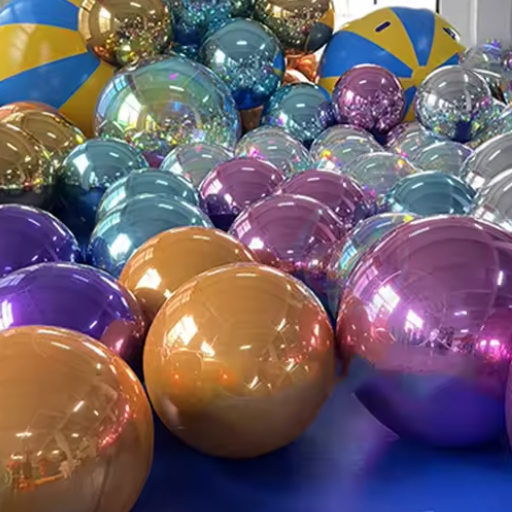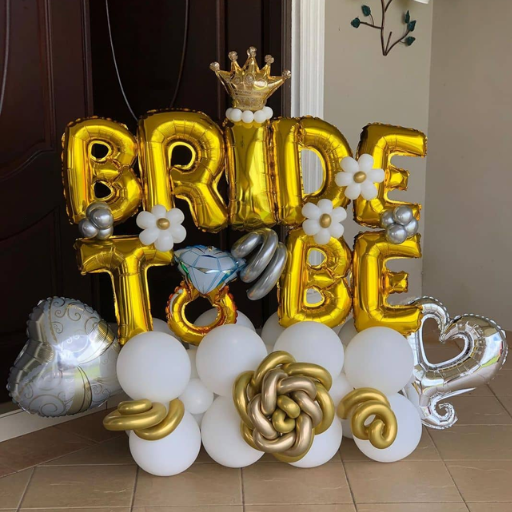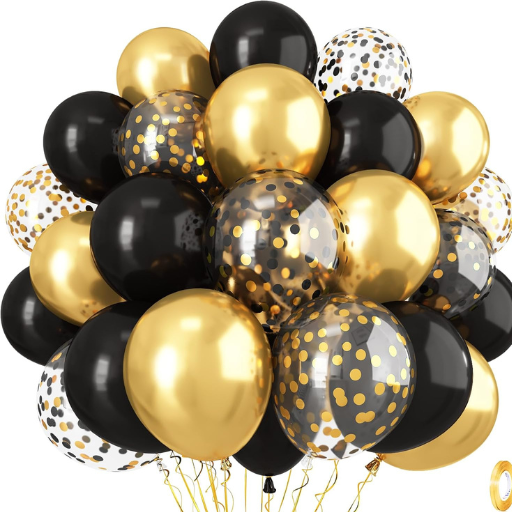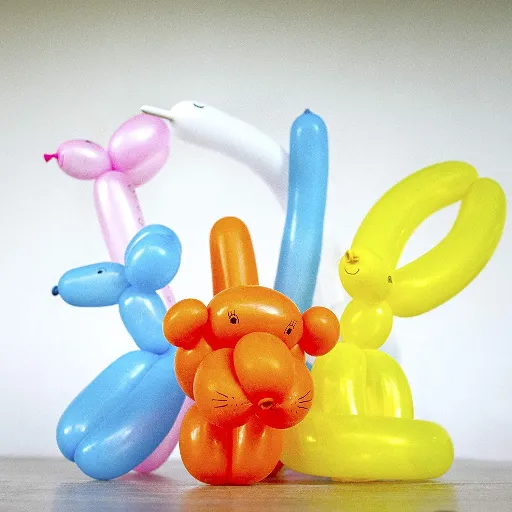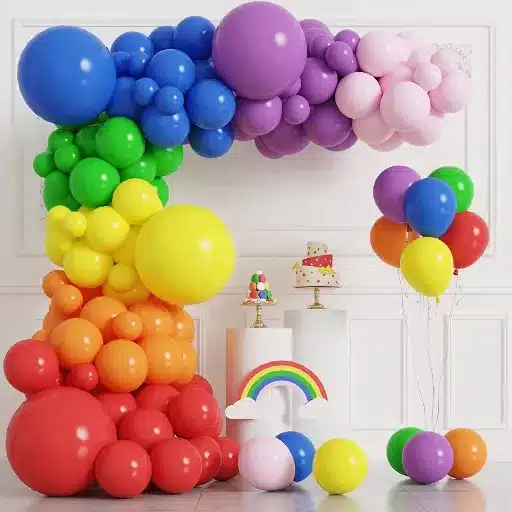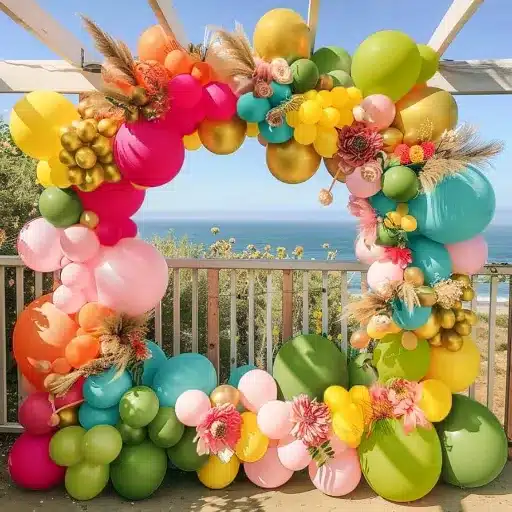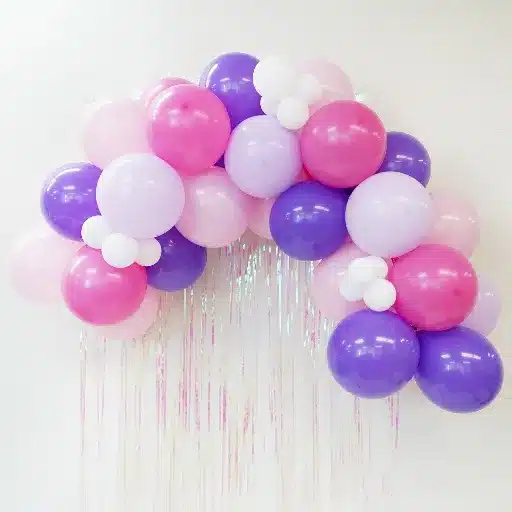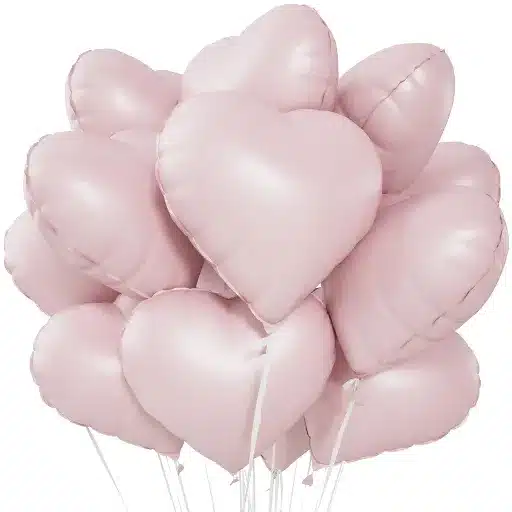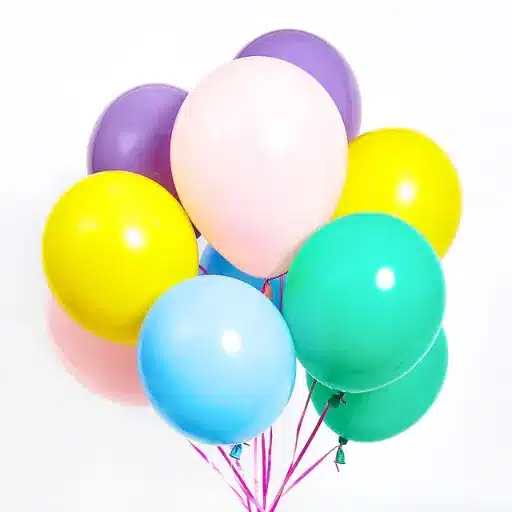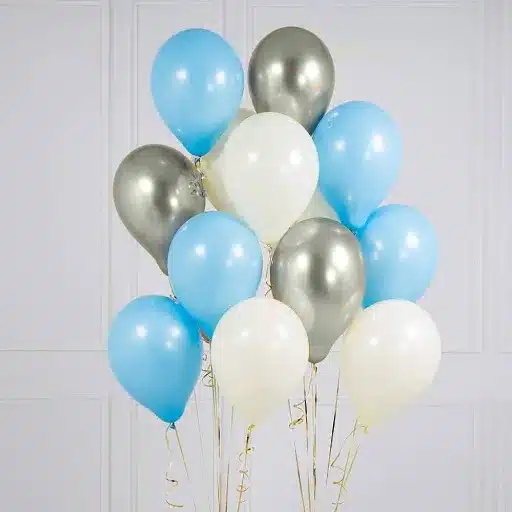Discover the magical world of balloon twisting! Whether you want to entertain children, amaze friends, or explore a unique creative hobby, this comprehensive guide will take you from beginner to confident balloon artist.
Introduction to Balloon Twisting

The art of balloon twisting is filled with fun and enthusiasm; one that encourages making magnificent shapes and designs with balloons. With a little bit of practice and learning about the right techniques, one can create very simple animals or flowers, and very complicated ones, to the delight of everyone in their circle.
What Are Balloon Animals?
A balloon animal is a creative sculpture made by twisting and shaping special modeling balloons into form of some animals such as a dog, giraffe, or swan. Hence, long, flexible balloons specially made for sculpting, normally latex balloons, can be shaped into an almost infinite variety of objects by balloon twisting or modeling.
Did You Know? Balloon twisting, as an art, is believed to have existed since the 1930s, gaining popularity when street artistes and clowns started dazzling the public with their creations in prismatic colors.
Current Balloon Art Trends
| Trend | Growth Rate | Popular Among |
|---|---|---|
| Basic Animal Shapes | 70% of DIYers | Beginners |
| Balloon Sculpture Tutorials | 45% increase | DIY Communities |
| Eco-friendly Options | 25% increase | Environmental Enthusiasts |
| Biodegradable Latex | 30% search increase | Conscious Consumers |
Essential Tools and Materials for Making Balloon Animals
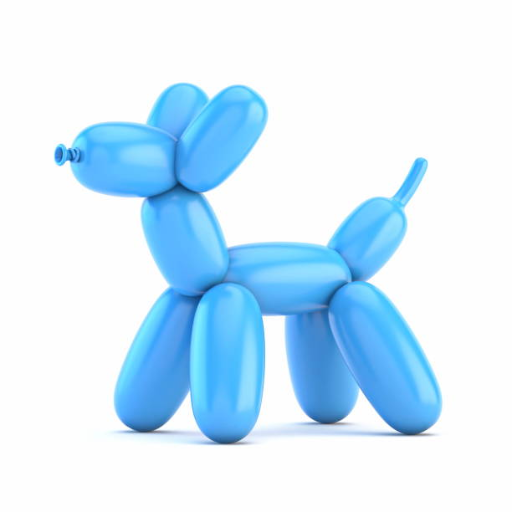
In making balloon animals, you need just a few essential tools and materials to get started:
- Quality twisting balloons – Usually made from latex and specially designed for sculpting
- Reliable hand pump – Important for quickly inflating balloons
- Scissors or cutter – Sometimes handy for making alterations
- Markers – For drawing features or adding decorative touches
Types of Balloons for Balloon Animals
Not all balloons are equal, and knowing your options can greatly enhance your balloon-twisting experience:
| Balloon Type | Best For | Characteristics | Trend Growth |
|---|---|---|---|
| Latex Balloons | Most balloon animals | Highly elastic, complex shapes, standard 260 size (2″ diameter, 60″ length) | 30% increase in eco-friendly searches |
| Foil Balloons | Rigid designs | Metallic layer, strong and durable, less flexible | 18% increase in crafting ideas |
| Modeling Balloons | All skill levels | Made exclusively for twisting, variety of sizes and colors | 22% increase in beginner searches |
Inflation Tools: Pumps and More
Pro Tip: While beginners often use hand pumps or lung power, professional balloon artists invest in electric balloon pumps for efficiency and consistent pressure. Electric pump reviews have seen an 18% increase in search volume!
| Tool Type | Best For | Advantages |
|---|---|---|
| Hand Pumps | Casual hobbyists | Low cost, maximum portability |
| Electric Pumps | Professionals | Quick inflation, constant pressure |
| Eco-friendly Options | Environmentally conscious artists | Sustainable, 12% growth in popularity |
Step-by-Step Guides for Easy Balloon Animals
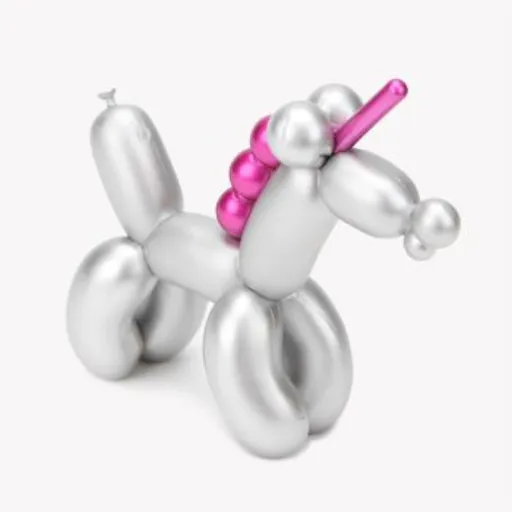
How to Make a Simple Balloon Giraffe
Materials needed: One long twisting balloon (260 size preferred)
Step-by-Step Instructions:
- Preparation: Inflate the balloon, leaving about two inches uninflated on one end
- Starting with the Head:
- Twist a small bubble for the nose
- Create two slightly larger bubbles for the ears
- Lock twist these ear bubbles together
- Shaping the Neck:
- Measure a long section for the giraffe’s neck
- Make it proportionately longer than other body parts
- Twist and lock the base of the neck
- Twisting the Legs:
- Create two sets of longer bubbles for front and back legs
- Lock the pairs into position for balance
- Forming the Body and Tail:
- Make a short bubble for the body between the legs
- Twist the remaining length into a thin tail
Twisting an Elegant Balloon Swan
Trending Design! Balloon swan tutorials have seen a 28% increased search over the last year, making them popular for weddings, parties, and school fairs.
Materials Needed:
- Classic 260 balloon (white is traditional, but feel free to be creative)
- Hand pump
The Creation Process:
- Inflation: Inflate balloon leaving 3-4 inches uninflated at the end
- Creating the Neck and Head:
- Twist a 3-inch bubble for the head at the nozzle end
- Create a 6-8 inch segment for the neck
- Gently curve the neck for natural elegance
- Creating the Body:
- Fold remaining balloon back towards the neck
- Twist to create a loop (this becomes the body)
- Adjust alignment so neck stands upright
- Creating the Tail:
- Use remaining end to create small tail twist
- Shape slightly upwards for lifelike effect
Tips for Avoiding Common Mistakes in Balloon Twisting
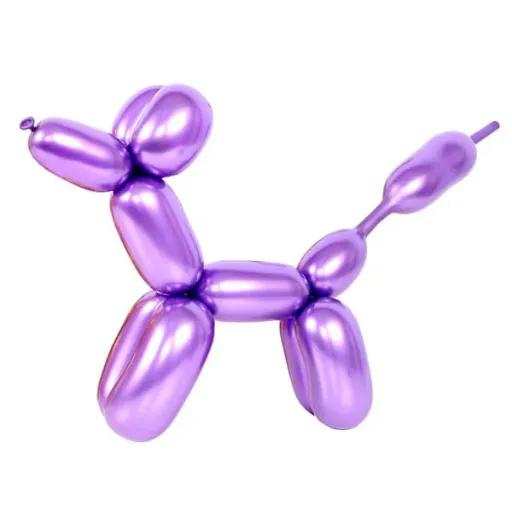
⚠️ Common Errors New Balloon Artists Make
| Common Mistake | Why It Happens | How to Avoid It |
|---|---|---|
| Overinflating Balloons | Makes balloons stiff and prone to popping | Leave 2-4 inches uninflated for flexibility |
| Using Wrong Balloon Type | Standard party balloons lack durability | Use specialized 260Q modeling balloons |
| Skipping Basic Practice | Rushing into complex designs too quickly | Master lock and pinch twists with simple shapes first |
| Poor Balloon Storage | Heat, sunlight, humidity make balloons brittle | Store in cool, dry place; check expiration dates |
| Insufficient Preparation | Not having enough materials or tools ready | Prepare all materials, colors, and quantities beforehand |
Maintaining Proper Balloon Tension
Key Statistic: Over 70% of balloon bursts during events are due to incorrect inflation, emphasizing the importance of precision.
- Inflate balloons to their recommended size (usually indicated on packaging)
- Avoid overstretching the latex material
- Consider temperature and humidity effects
- Use balloon sizers for precision (reduces material waste by 25%)
- Inflate in the same environment where balloons will be used
Reference Sources
- Twisty Art – A Guide to Starting and Growing Your Balloon Twisting Business
This guide outlines the key markets for balloon twisting, including children’s parties, community events, and workshops. It also provides insights into the tools, skills, and marketing strategies needed to succeed in this niche.
Source Link - Balloon Suite – How to Start a Balloon Business
This resource discusses the steps to start a balloon business, including identifying your target audience, building an online presence, and marketing your services effectively.
Source Link - YouTube – Pricing Your Work (Beginner Entrepreneur)
This video provides practical advice on pricing services, which is crucial for beginners entering the balloon twisting market. It helps validate the financial feasibility of targeting this audience.
Source Link
Frequently Asked Questions (FAQs)
These are basic balloon figures that anybody can fabricate with simple methods of balloon making. They usually utilize long balloons that may be twisted into bits and pieces of different shapes. Learning involves following step-by-step guides with easy-to-follow instructions. There are plenty of online tutorials available, including excellent ones on YouTube.
Begin by taking a long balloon and inflating it, leaving about 3 inches at the opposite end untwisted. The first twist is for the nose; then, two more twists are made for the ears. The next twist or two creates the body with the remaining twists being for front legs and tail. This easy design is among the most favorite beginner balloon animals.
Basic techniques include inflating the balloon adequately, tying a secure knot, and most importantly, the art of twisting. You should learn making basic twists to create shapes and lock them together. Practice is key – the more you do it, the easier it becomes to work with balloons to create various animal figures.
Common beginner balloon animals include:
- Classic balloon dog (most popular globally)
- Elegant swan
- Tall giraffe
- Simple mouse
Each has its own twists and folds, but once you learn one, the techniques transfer to others.
🎈 Ready to Start Your Balloon Twisting Journey?
Remember, balloon twisting is an art that combines creativity, skill, and joy. Whether you’re making your first balloon dog or planning elaborate sculptures, the key is practice and patience. Start with simple designs, master the basic techniques, and gradually work your way up to more complex creations. Most importantly, have fun and enjoy bringing smiles to others with your balloon artistry!

